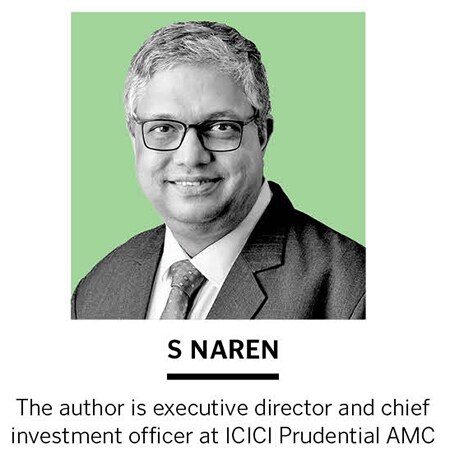India will navigate a promising but challenging investment landscape in 2024: IC
As we embark on the journey into 2024, the Indian stock market finds itself at crossroads



The Indian stock market grappled with global monetary tightening fears and foreign fund outflows early in 2023. The US Federal Reserve’s indication of no rate cuts until inflation control added pressure. Geopolitical tensions impacted sentiment, but throughout these times, Domestic Institutional Investors (DIIs) provided the much-needed support to the market.
The second half of the year saw the market climbing higher, driven by optimism over domestic growth, sustained foreign fund investment, easing inflation, definitive indication of rate hike pause by the US Fed, along with robust corporate earnings. Despite concerns about China’s trade data, strong Indian GDP prints and positive state election outcomes propelled the market upwards.
As we embark on the journey into 2024, the Indian stock market finds itself at a crossroads.
India boasts robust macros, a resilient banking sector with clean balance sheets, and minimal corporate leverage. These factors enable a flourishing economic landscape, underscoring India’s ability to weather global uncertainties.
Historically, election years have been marked by increased market volatility. As we enter 2024, the starting point of valuation is high, making it the costliest election (in valuation terms among the past five election years).
In terms of market segmentation, no pocket is inherently cheap at this point. Today, all three segments (large, mid, and small) appear expensive compared to their historical valuation. However, on a relative basis, large-cap stocks seem to be better positioned. Investing in mid and small cap segments may be a risky proposition. Therefore, from an investment perspective, one can seek trades that are relatively cheap or look for assets that are fairly valued.
Since, from a global angle, the debt-to-GDP ratios of most developed countries, including China, remain quite high, there is a likelihood of increased market volatility in the West. Also, the world’s reserve currency is not in an optimal condition. So, investors should remain vigilant and consider the impact of these factors on their portfolios.
In the face of investing in an expensive market, exercising prudence becomes paramount. For equity allocation, investors today can consider large cap, flexi cap or multi cap strategies. Another option is hybrid investing, especially that of multi-asset, aggressive hybrid or balanced advantage categories.
Debt, though an interesting asset class, demands a strategic approach. Investing in hybrid instruments provides a prudent way to tap into the potential of debt securities. Similarly, gold, a traditional safe-haven asset, can be approached through investing in multi-asset fund.
To conclude, India is in a fine fettle but what investors need to be cognisant about is that most of the positives have been priced in at current levels. For a smooth investment journey, it is important to focus on asset allocation.
First Published: Jan 04, 2024, 13:19
Subscribe Now